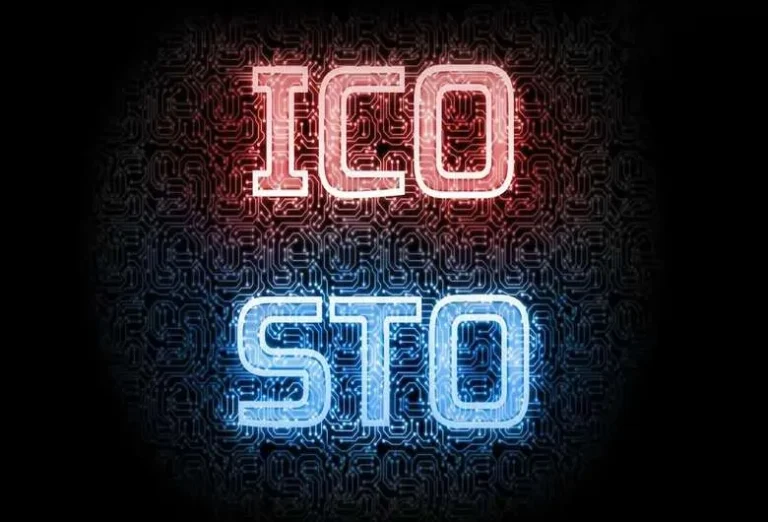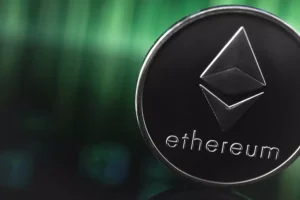Small companies and startups face difficulties when trying to fund their projects. Raising capital requires deploying powerful strategies with strong pitch calls. Traditionally, this goal was achieved through IPOs. However, winning stakeholders’ trust is a challenging endeavor, as a venture has to go through every stage of a convoluted vetting process and meet tight regulatory requirements to succeed. These days, other strategies aimed at finding backers and ensuring their lasting support have gained prominence. In this ICO vs STO comparison, we decided to check which alternative is more suitable for increasing the effectiveness of fundraising efforts.
What Are STO and ICO?
Both terms refer to the mechanisms deployed by ventures in the blockchain-powered industry to ensure a stable flow of investments. Nevertheless, they can be used in various situations, as companies choose one of them depending on the regulatory framework they work in.
An ICO allows buyers to purchase newly released tokens or decentralized currencies. The method allows startups to raise funds without using the services of traditional financial organizations. Nonetheless, it’s essential to remember that this approach does not allow stakeholders to own a company’s shares.
An STO involves selling cryptographic coins comparable to traditional stocks. STOs are heavily regulated, as they enable asset holders to earn dividends, get shares in profits, or participate in governance. While the issuance of tokens is an important part of both processes, their objectives are quite distinct.
When launching an ICO, ventures develop and release new assets that can be purchased with cryptocurrencies. These coins are used within a framework a firm wants to develop. Many startups use the ICO model when building decentralized applications (DApps). Entrepreneurs utilize them to access specific products, tools, and services. Long-term holders do not sell such assets as they hope their value will increase over time.
An STO releases digital coins that symbolize the ownership of shares or real estate. It is a subject of tight regulations, as they represent ownership of actual assets. Financiers find it safer to invest in such projects, as they allow them to earn a stable passive income.


Turnkey Brokerage Solution For Your Business
Get the most profitable fully licensed fx/crypto brokerage software or ready-to-operate business in 48 hours. Best-in-class web & mobile trading platforms, sales-driven CRM, full integration with MT4/5, and 150+ payment providers.
What is the Difference Between a Security Token Offering and an Initial Coin Offering?
Because of the erratic market movements, institutions are wary of entering the market, making it challenging to secure funding for new projects. STOs and ICOs are result-yielding approaches that enhance efficiency. However, some notable traits make them stand out:
- The type of holdings: In STOs, assets are a token representation of ownership rights. ICOs enable investors to utilize specific products. STOs prioritize protection. ICOs focus on heightening an ecosystem’s accessibility.
- Regulations: STOs function within tight legal constraints, while ICOs do not follow standardized rules.
- Safety: STOs focus on funds protection. They provide comprehensive data about the core assets. ICOs vary in the degree of their transparency.
- Potential returns: When dealing with an STO, organizations claim a share in businesses or concrete holdings, which allows them to earn money when the stake grows in value. ICO does not offer control rights but opens many chances to make a profit.
An initial coin offering may be a suitable option for individuals and organizations striving to explore the speculative opportunities opened by blockchain. Market participants experiment with various strategies to find the most resultative approach and increase profits. STOs deploy top-grade protection mechanisms and issue coins backed by actual assets.

What to Choose: ICO or STO?
After comparing the security token offering vs initial coin offering, investors discover the best approach for their needs, as each method is suitable for a particular situation. Selecting carefully requires considering such criteria:
- Regulations: Stakeholders who prioritize safety and want to diversify portfolios by buying altcoins that meet securities requirements often choose STOs. This approach guarantees regulatory compliance and enables holders to operate in a predictable atmosphere. While ICOs are easier to invest in, such projects could be risky.
- Possible yields: Individuals and firms prefer an STO if they want to hold proprietary rights and have voting power. They earn dividends, allowing them to diversify revenue sources without risking capital. Coins available through ICOs allow buyers to access a platform, app, or network. Even though their value may decline, traders intend to capitalize on price fluctuations.
- Asset backing: The tokenization of material resources is a noticeable trend in the industry. STOs leverage this approach to offer traders a chance to earn profits by backing innovative undertakings with a large potential. ICOs allow supporters to fund hazardous endeavors.
- Target audience: A brief ICO vs STO juxtaposition shows that major institutions prefer the latter as this approach allows them to remain compliant. ICOs are easier to access, increasing their value for potential investors who do not meet SEC requirements.
When choosing the optimal fundraising method, developers should consider the type of investors they want to attract, the desired regulatory frameworks, and safety concerns. If a company seeks to protect its supporters, remain compliant, and maintain transparency, STOs may be a smarter choice.
Future Trends and Developments
As major corporations become increasingly interested in cryptocurrency, understanding the potential impact of the current developments is necessary to discover new opportunities. The evolution of blockchain technology is expected to fully transform the way ICOs and STOs function. Below, we have outlined the most anticipated changes:
- Increased interoperability: Establishing bridges between networks will make it easier to exchange assets based on various blockchains and contribute to improved token liquidity.
- Smart contract transformation: New, more advanced platforms will be created, allowing shareholders to protect holdings from cyber threats.
- Enhanced scalability: Solving issues affecting transaction speed and resulting in higher fees will make some digital currencies more appealing.
- Predictable regulatory frameworks: The adoption of new laws is expected to create the right environment for supporting all sorts of initiatives.
- Asset standardization: The emergence of new standards will streamline the issuance process.
- DeFI platforms: The development of such services will open new fundraising opportunities.
After comparing ICO vs STO, we have concluded that these mechanisms are suitable for projects varying in their objectives. They were devised for different shareholders and require attention to various regulatory practices. While ICOs became less popular due to a lack of transparency, compliance issues, and potential vulnerabilities, STOs are an excellent alternative for those interested in asset-backed holdings. The development of hybrid models combining the best traits of both approaches is expected to expedite the adoption of virtual currencies.






